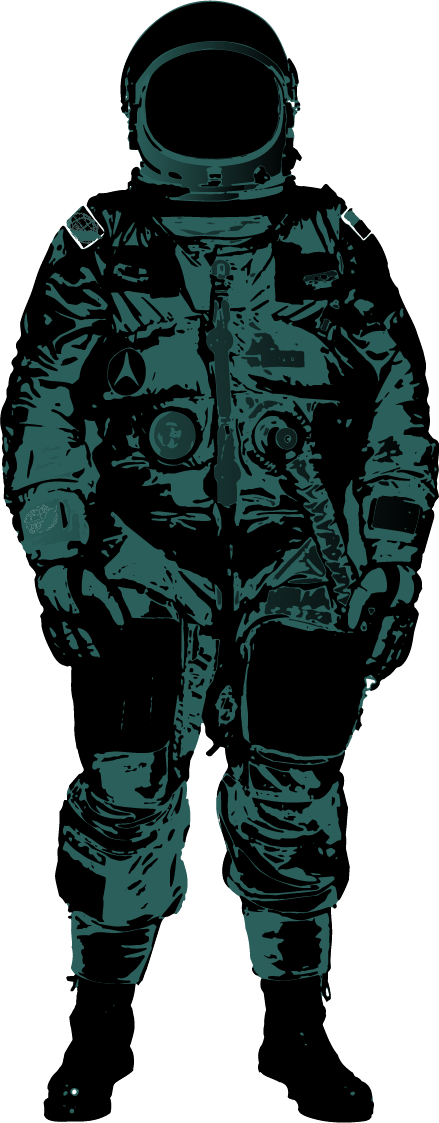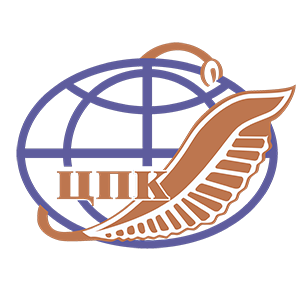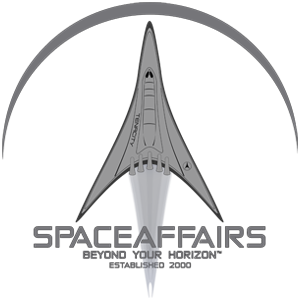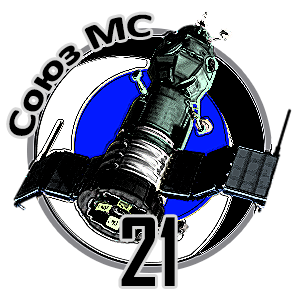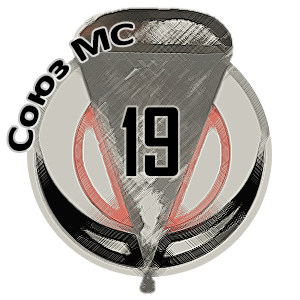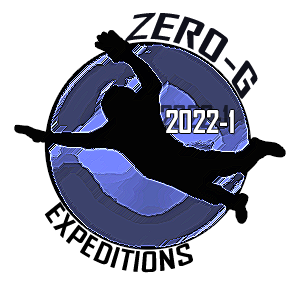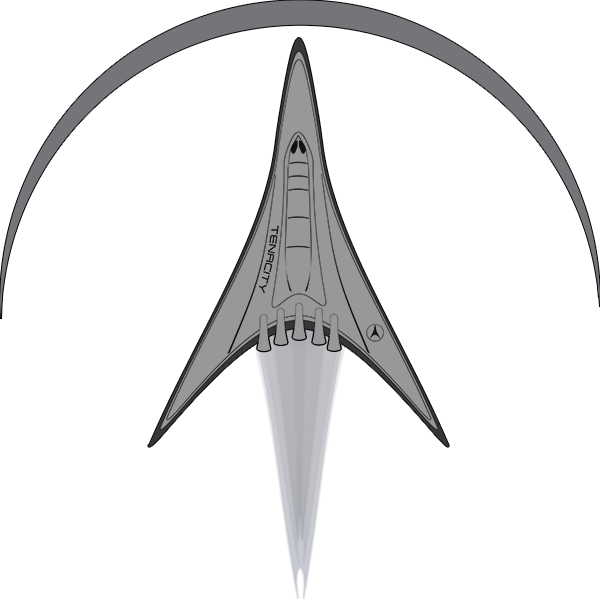
Astronautics
do you have the right stuff?
Hydrolab
Zero Gravity
Centrifuge
Spacecraft Training
Survival Trainings
Station Training
Astronautics
Astronauts
Note March 1, 2022: The attack on Ukraine that has now taken place naturally leads us to decide that we will suspend all activities in Russia and at the Baikonur Cosmodrome in Kazakhstan for an indefinite period of time. For private astronaut training experiences we are working on new possibilities.
The word "astronaut" comes from the ancient Greek of "ἄστρον astron" for "star" and -naut, to "ναύτης nautes" for "sailor". In the western hemisphere, the term was coined by NASA in December 1958 when they decided to call their spacemen "astronauts". There are many terms in other languages that describe astronauts: Cosmonaut (Russia), Taikonaut (China), Angkasawan (Malaysia) and Vyomanaut (India).
According to the guidelines of the International Academy of Astronautics (IAA), astronauts are humans who set off into orbit and circle the earth once (just like Yuri A. Gagarin did). This guideline is certainly not binding and has no legal relevance, and thus there are nowadays many groups of people who call themselves astronauts.
There are not only astronauts who belong to a state-space agency, such as NASA or ESA, but also private and commercial astronauts, and this will change fundamentally in the coming decades. Especially the number of commercial astronauts will increase sharply. More private people will enter space, both suborbital (altitude between 100 and 250 kilometres without orbit) and orbital with one or more orbits around the earth onboard a spaceship or onboard space stations like the ISS, or even beyond that to the moon, or Mars!
However, whichever journey you decide to take: Training basics are part of the journey into space, so this section "Astronautics" is the right place for you! Here you will find the essential information you need to equip yourself for a journey into space.
For almost 20 years now, SPACE AFFAIRS has been working closely with the Yuri A. Gagarin Cosmonaut Training Center (GCTC) in Star City, and together we offer you the opportunity to participate in various pieces of training that will confront you with the topic of space travel. Sometimes it takes a long way to enable yourself to endure all the stresses and strains of a journey, and that's just training. Specialists train you, give you hints about what you can do well and what you can do better. The training is not only meant to bring you to your personal mental and physical performance reserves!
Space is a life-threatening place that has nothing better to do than kill you within minutes! Also, if he didn't make it the first time, then he will try a second time!
To be prepared to master emergencies, training is necessary, which partly goes beyond your performance reserves. A thousand things can go wrong at the start or during the flight into space, and you should be prepared!
Spaceflight - Suborbital
Most of the companies that have taken on suborbital space flight also offer their customers 2 to 3-day courses, which familiarise them with the topic "suborbital space flight". These courses depend, of course on the type of spacecraft to be used. Whether these "crash courses" will make it possible to prepare everyone for the journey into space will have to be proven.
Here we present the technical and content differences of the two companies "Virgin Galactic" of the English entrepreneur Richard Branson and "Blue Origin", space company of the eccentric Amazon founder Jeff Bezos. Both companies will ultimately pave the way for suborbital space tourism.
VIRGIN GALACTIC
- Market entry: 2005.
- System technology: Rocket-powered aircraft SpaceShipTwo "VSS Unity" which is dropped by a carrier aircraft "White Knight" at an altitude of approx. 15,000 metres.
- Passengers: Between 4 and 6 plus 2 pilots.
- Altitude: originally aimed at <100 kilometres (Karman line, internationally recognised border to space - FAI). They are meanwhile reduced to the US-national edge to the edge of space with at least 80 kilometres (NASA and USAF specification).
- Flight time: approx. 90 minutes, of which 40 minutes flight time SpaceShipTwo after the drop to landing.
- Time in weightlessness (free-fall): between 3 and 5 minutes.
- G-Forces: +4G to +5G after the launch of rocket engine from SpaceShipTwo / to +6G after aerodynamic deceleration return.
- Status 2023: 1 total loss SpaceShipOne "VSS Enterprise" in October 2014. 2 successful test flights SpaceShipTwo "VSS Unity" over 80 kilometres altitude (2018/2019) with a crew of 2 and 3. One glide test flight SpaceShipTwo June 2020. First successful flight with 4 passengers and two pilots on July 11, 2021, as defined by the US Air Force. Between June and November 2023 VG has been performed 6 commercial flights to an altitude between 87 and 88 km (54 - 55 miles) altitude.
- Launch of commercial flights: 2023.
- Price: $450,000 per seat.
- Seats sold: approx. 700.
BLUE ORIGIN
- Market entry: 2000.
- System technology: Single-stage missile system with "New Shepard" capsule attached, booster missile reusable (landing system), capsule reusable.
- Passengers: 4 - 6 plus min. 1 pilot.
- Altitude: At least 100 kilometres (Karman Linek - FAI).
- Flight time: From lift-off to landing, between 8 and 11 minutes depending on the altitude reached.
- Time in weightlessness (free-fall): 2- 3 minutes.
- G-forces: Between +3G and +5G after the launch of the rocket engine / +4G with subsequent landing before opening the parachutes of the "New Shepard" flying capsule.
- Status 2023: 17 test flights (16 entirely successful, 1 partially successful because booster destroyed during landing), 12 of them over 100 kilometres altitude. First flight with a crew of 4 on July 20, 2021. Since then, 6 crewed flights until September 2022. September 22 anomaly of the booster rocket which triggered the launch escape system during a non-crewed science payload flight.
- Start of commercial seat sales: 2021 (TBD).
- Launch of commercial flights: expected in 2024 (TBD).
- Price: Not yet determined, estimates assume a cost between $200,000 and $250,000 per seat.
- Seats sold: Not known yet. After the first successful human flight Blue Origin started with seat sellings but not like ticket sales. According to its own information, flight sales reached more than $100m (as of August 2021).
Suborbital - Training
What do we recommend as training sessions to know if you are suitable for a suborbital space flight?
G-FORCE TRAINING (Centrifuge Training)
Experience of increased acceleration due to gravity up to a maximum of +6G over several rides, to learn special techniques to master these G-forces without you becoming unconscious.
MEDICAL EXAMINATION OF THE VESTIBULAR SYSTEM
In training with the "Rotating Chair", the increased movements of the sense of balance in the inner ear are addressed, and you learn to fight against discomfort (motion sickness or travel sickness), which can occur due to the effects of suborbital space flight.
MEDICAL EXAMINATION OF THE CARDIOVASCULAR SYSTEM
The most significant risk is an overload of the cardiovascular system due to these flights. A cardio workout to keep your circulatory system going is always recommended, but especially if you decide on a private trip to suborbital heights.
EMERGENCY TRAINING IN PRESSURE CHAMBERS
The air pressure decreases by 0.1 bar for every 300 metres of flight altitude. Up to a height of 6,000 metres, there is still a good chance of survival if there is a pressure failure in the cabin of the spacecraft. More than 6,000 metres are immediate measures to learn which can save lives!
Whether Virgin Galactic or Blue Origin will travel into space without pressure suits is not known at the moment. As these are US-American companies, however, they must adhere to FAA safety guidelines, which apply in particular to passenger transport.
The US-Air Force, for example, prohibits its pilots from reaching altitudes over 50,000 feet (15,240 metres) if they are not equipped with pressure suits.
For suborbital space flights, flight altitudes between 80 km (262,467 feet) and 120 km (393,700 feet) are reached.
ZERO-G WEIGHTLESSNESS TRAINING
During parabolic flights, you can train your behaviour in weightlessness. For example, the Ilyushin 76MDK of the GCTC flies parabolic manoeuvres, which contain up to 30 seconds of weightlessness per parabola. Also, the change between the different earth accelerations becomes visible in parabolic flights, and these are particularly suitable for movement training to prevent motion sickness and to experience the sensation in weightlessness.
Spaceflight - Orbital and beyond
Since the days of a Yuri A. Gagarin, who was the first man to enter orbit in April 1961 and circumnavigate the Earth once, 575 people have flown into space (as of May 2020). Eight completed a suborbital space flight, 550 reached Earth orbit, 24 travelled beyond Earth orbit, and 12 walked on the Moon. Many astronauts also flew into space several times.
Astronauts have spent over 29,000 person-days (or 77 years in total) in space, including over 100 person-days for Extra Vehicular Activities. Thirty-eight different nations were with humans in space.
The proportion of US-American astronauts is much higher than that of Russian cosmonauts, who spent more time in space. Worth mentioning here is the stay of 437 days in a mission of the Russian cosmonaut Valeri Polyakov on board the MIR space station, and the Russian cosmonaut Gennady Padalka, who holds the previous record of a human in space with 878 days 11 hours, 29 minutes and 24 seconds in 5 different missions. Since 2003, China has risen to the list of human-crewed spaceflight, and so far, it has placed 11 people in space.
The selection procedures of the space agencies are particular, as well as limited. Astronauts are not searched annually. It depends on the mission objectives for which areas astronauts are wanted, and there are pilot astronauts, mission commander astronauts and payload specialists. Flight engineers and scientific astronauts are also desired. The space agencies are building up astronaut classes.
In addition to profession and qualification, the main focus is in any case on medical suitability. Only after medical relevance, it can be determined whether an applicant can be admitted at all for training. Since we have been working with the Yuri A. Gagarin Cosmonaut Training Center for almost 20 years now, we would like to introduce you to the training qualifications required to enter orbit with the Russian Soyuz spacecraft.
Provider of orbital space flights (Sovereign and private suppliers)
ROSKOSMOS - RUSSIAN SPACE AGENCY
System: "Soyuz MS" spacecraft with Soyuz 2.1 launch vehicle
- Location of launch: Baikonur Cosmodrome Kazakhstan, planned from 2024 Vostochny Cosmodrome Amgur Region, Russia.
- Crew 3.
- Flight time: Orbital space flight eight days in free-flight orbit, docked at space station ISS maximum 180 to 210 days.
- Commercial Astronauts/Spaceflight Participants: 1 to 2.
- Price: between $43,000,000 and $78,000,000 per commercial seat incl. training and onboard costs International Space Station.
- Status: Bookable for single seats as well as for complete autonomous missions. Because of the Russian aggression against Ukraine, unlikely to book any further flights for space flight participants in the upcoming years.
SPACE X
System: "Dragon-2" spacecraft on Falcon 9 launch vehicle
- Location of launch: Cape Canaveral, Florida/USA.
- Crew: Maximum 7.
- Flight time: orbital space flight autonomous seven days free-flight orbit docked at space station maximum 210 days.
- Commercial Astronauts/Spaceflight Participants: Up to 4.
- Price: $50,000,000 per seat – Launch Costs.
- Status: In test status - Bookable from 2021 (TBD).
System: "Starship" on Super-Heavy launch vehicle (BFR).
- Location of launch: Cape Canaveral, Florida/USA.
- Crew: 10 – 30.
- Flight time: orbital space flight up to 14 days in free flight, docked at space station up to 210 days/moon orbit 21 days / Mars orbit and landing 180 - 260 days, 21 days on Mars, 180 - 260 days Return flight to Earth.
- Commercial astronauts/spaceflight participants: 7 - 25.
- Price: TBD
- Status: In conceptual design, Earth orbit flights with docking ISS expected 2023/24 (TBD).
BOEING
System: "Starliner - CST 100" spacecraft on Delta IV/V/Vulcan/Falcon-9 launch vehicles
- Location of launch: Cape Canaveral, Florida/USA.
- Crew: maximal 7.
- Flight time: orbital space flight autonomous 60 hours in free flight orbit, docked at space station maximum 210 days.
- Commercial Astronauts/Spaceflight Participants: 1 to 2.
- Price: $50,000,000 per seat – Launch Costs.
- Status: In test status - Bookable from 2023 (TBD).
NASA - NATIONAL AERONAUTICS AND SPACE ADMINISTRATION, USA
System: "Orion" - US-European spacecraft on SLS (Space Launch System) launch vehicle
Manufacturer: Lockheed-Martin (Orion Crew Module - CM) - Airbus Defence and Space (Orion Multi-Purpose Crew Vehicle - Orion MPCV)
NASA "Artemis" Program / Mars Program / Asteroid Belt Program
- Location of launch: Cape Canaveral, Florida/USA.
- Crew: 2 - 6 Astronauts
- flight time: 21 days space flight in Earth-moon trajectory / transfer trajectory, docked at Propulsion and Crew Habitat Module (PCHM) in Earth-Mars-Earth trajectory / transfer trajectory / Hohmann trajectory 760 days.
- Commercial Astronauts/Spaceflight Participants: Currently not known.
- Price: Not yet defined.
- Status: Orion CM, unmanned test in 2014 - "Artemis 1", first joint unmanned flight of Orion CM and MPCV in a 21-day Earth-Moon-Earth mission including 6 days moon orbit, planned for 2022 on SLS launcher. - Artemis 2", first manned flight of Orion CM and MPCV in a 10-day Earth-Moon-Earth mission, planned for 2023.
Orbital Training
In addition to profession and qualification, the main focus is in any case on medical suitability. Only after medical relevance, it can be determined whether an applicant can be admitted at all for training. Since we have been working with the Yuri A. Gagarin Cosmonaut Training Center for almost 20 years now, we would like to introduce you to the training qualifications required to enter orbit with the Russian Soyuz spacecraft.
LEVEL 1 - MEDICAL QUALIFICATION
- Clinical blood analysis
- Urine analysis
- Fecal analysis
- Biochemical blood analysis
- ECG
- Echo ECG
- Ultrasound examination of the internal organs, small pelvis, parathyroid gland
- Bicycle ergometry
- Ortho test
- EEG
- Gastroscopy
- Audiometry
- Vestibular Tests
- Tests in the pressure chamber
- Testing in the centrifuge
- X-ray / computed tomography skull, lung, stomach regions (kidneys, liver)
- Ultrasound Doppler of vessels
- Additional tests as required
- Specialist examination (family doctor, ear, nose and throat specialist, neurologist, surgeon, ophthalmologist, psychologist, a gynaecologist for women, a urologist for men)
Many of these tests are also carried out with space travellers from other nations in their home country, and the corresponding finding documentation is sent to the specialists in Russia. However, these decisions are made individually as to which of the examinations must be carried out in Russia or must be repeated if necessary.
After these examinations, there are then three results:
a) The proband is suitable for a flight into space with the Soyuz spaceship.
b) The proband is currently not ideal for a trip into space with the Soyuz spacecraft, some problems of a medical nature must first be solved, then the proband is introduced again.
c) The medical suitability is not sufficient, cannot be improved; thus, the way into space regarding a Soyuz space flight remains denied.
LEVEL 2 - BASIC TRAINING: THEORETICAL LESSONS, LECTURES AND ACTIVE SIMULATOR TRAINING FOR A CREW
If the medical suitability was favourable, then the basic training begins in different training units, which are mostly accomplished in the GCTC:
- Russian Language Studies (TBD depending on the level of knowledge)
- Space Navigation (40 hours)
- Onboard systems from Soyuz and ISS (40 hours)
- Scientific equipment onboard the ISS (15 hours)
- Flight theory (30 hours)
- Space Medicine (30 hours)
- On-board computer (15 hours)
- Onboard video (15 hours)
- Practical Training Soyuz Simulator (250 hours)
- ISS Simulator (250 hours)
- Training on scientific equipment (100 hours)
- Special Training - Survival, etc. (20 hours)
- Medical practice (self-test) (50 hours)
- Medical tests to prepare for space, including IL-76MDK Zero-G Flights (100 hours)
- Physical training (200 hours)
- Travel to the USA for individual training (100 hours)
- Training on US devices (100 hours)
- Training in Germany at ESA for European Systems Columbus Training (100 hours)
- Other training (200 hours)
This list is not binding with study times; some of these units can be combined with mission training and self-study times are not included. It is a reference due to minimum study times.
LEVEL 3 - MISSION TRAINING
The mission training is conducted with a selected crew that will jointly provide the team of a space mission. Some of the crews have already been determined for some time, and they also go through parts of the basic training together. This training repeats some areas of the basic training, but the crew is transferred, which consists of 3 participants: The Mission Commander, the 1st Flight Engineer and the 2nd Flight Engineer. The 2nd flight engineer can also be a private astronaut or a commercial astronaut, and pieces of training are individually arranged and carried out in the period of 8 to 6 months (depending on the pre-qualification and comprehensive basic training) before launching into space after the medical suitability has taken place.
- Specialized Crew Training (250 hours)
- Russian language (TBD - duration after pre-qualification)
- Practical training in a crew at the Soyuz simulator (200 hours)
- Practical training in a team at the ISS simulator (150 hours)
- Specialised training and practice to eat, drink, use of the wet cell onboard the ISS (30 hours)
- Medical training (300 hours)
- Scientific education (250 hours)
- Specific training for experiments (200 hours)
- Repair training Soyuz spaceship and ISS (200 hours)
If all these training units have been completed, the participant is checked before a Russian commission and then receives his flight diploma.
Nothing stands in the way of a flight into orbit!
Teamwork makes the dreamwork!
YOUR DREAM CAN BE ALIVE!
Surely it will come in the next years, that the ways into space, also high out into the orbit and perhaps even beyond, become more comfortable than the methods of the professional astronauts so far.
In any case, we are at your disposal, no matter which way you choose whether it's just a matter of "sniffing around", whether you want to find out what it means merely to follow in the footsteps of an astronaut, or whether you're thinking about venturing into space by self.
Just remember, "Teamwork makes the dreamwork!"
You can be sure: Almost 20 years of experience in this extraordinary field leave you with skills that you can't find with Google.
With SPACE AFFAIRS you have found a reliable and highly experienced partner who will make your dream of travelling into space a reality if the primary conditions are fulfilled.
